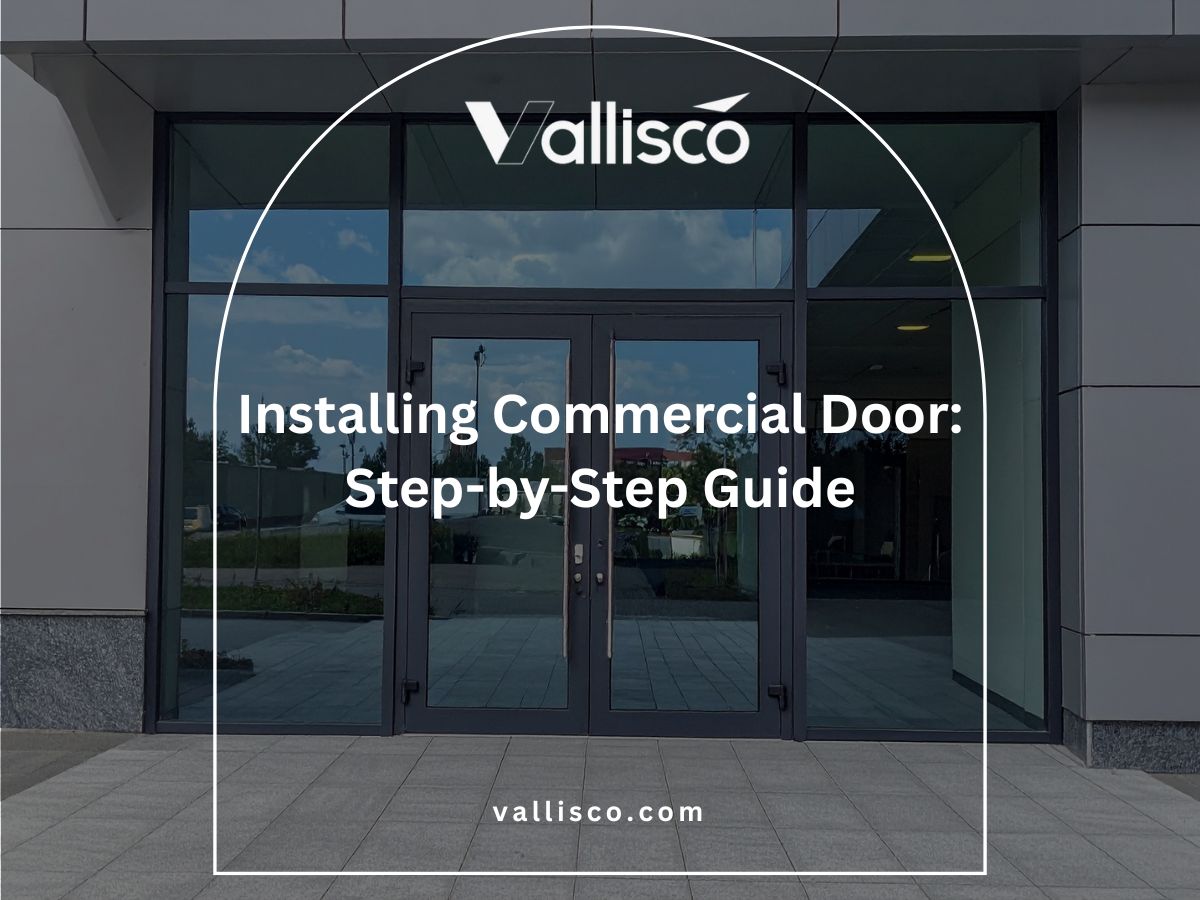I still remember the first time our office’s automatic door jammed during a client visit. We had to prop it open with a chair, and let’s just say it didn’t exactly scream professionalism.
That day, I realized how much we rely on these doors to create smooth first impressions and seamless traffic flow.
Since then, I’ve dug into how automatic doors work, helped clients choose better systems, and spoken with installers and engineers across multiple industries.
In this article, I’ll break it down simply: how they work, the types out there, key components, and what to watch for when choosing or maintaining one. If you’re curious or planning to invest, you’re in the right place.
These doors may look simple, but what goes on behind the glass is smarter than you think.
Let’s get into it!
1. What Is an Automatic Door?
An automatic door is a door that opens and closes on its own, without needing to be pushed or pulled. It works by using sensors to detect movement, then signals a motor to move the door in or out of the way. After someone walks through, it closes by itself.
You’ll often see these doors in offices, stores, hospitals, and other public places. They help manage foot traffic and make entry more convenient. For businesses, they offer a practical way to improve access and keep things running smoothly.
2. How the Sensing Mechanism Works
It’s easy to walk through an automatic door and not think twice about what’s making it move. But there’s a smart system of sensors working behind the scenes to make that seamless entry happen. Here’s a simple breakdown of how each part of the sensing mechanism does its job:
- Motion Sensors: These sensors detect movement in front of or near the door, usually using microwave technology. When a person approaches, the sensor picks up the motion and triggers the door to open almost instantly.
- Infrared Sensors: Infrared sensors use light waves to detect heat or movement in a specific range. When a warm object, like a person, enters the detection zone, the door system responds by opening.
- Pressure Sensors: Often found in floor mats near the entrance, these sensors respond to weight being applied. As soon as someone steps on the mat, the change in pressure activates the door’s opening mechanism.
- Ultrasonic Sensors: These sensors send out high-frequency sound waves and listen for their echoes bouncing back. If the return signal changes because something is moving nearby, the sensor tells the door to open.
- Safety Sensors: Safety sensors are designed to prevent accidents by detecting objects or people in the path of the door. If anything is blocking the doorway, the sensor holds the door open until it’s safe to close.
Knowing how these sensors work gives you a better idea of how automatic doors stay responsive and safe. It’s a smart mix of technology that keeps your entry points both efficient and user-friendly.
3. Core Components of an Automatic Door System
Automatic doors don’t just rely on sensors. They work thanks to several key components that all play a role in making the door open, close, and stay safe. The table below gives a clear look at each major part and what it does in the system.
| Component | Function | Location | How It Works | Why It Matters |
| Sensor | Detects motion or presence | Above or beside door | Sends signal when someone approaches | Tells the door when to open |
| Control Unit | Processes signals | Inside housing or nearby | Directs motor and timing | Coordinates the whole system |
| Motor | Moves the door | Inside top frame | Powers the door to open or close | Drives the actual movement |
| Drive Belt/Track | Connects motor to door | Inside frame or track | Transfers motor power to door panels | Enables smooth door motion |
| Safety Sensor | Detects obstructions | Bottom or side of doorway | Stops or reverses if something is in the way | Keeps users safe |
4. Types of Automatic Doors
Not all automatic doors are built the same. The type you choose depends on your space, foot traffic, and how you want people to move through your building. Here’s a closer look at the four main types so you can make the right call.
Sliding Automatic Doors
Sliding doors are one of the most common types used in commercial spaces. They open by sliding horizontally, usually into a hidden pocket or along a track. These doors are great for places with a lot of foot traffic, like hospitals or retail stores. Since they don’t swing out, they help save space and lower the chance of someone getting bumped. If your goal is convenience and a clean look, this option works well.
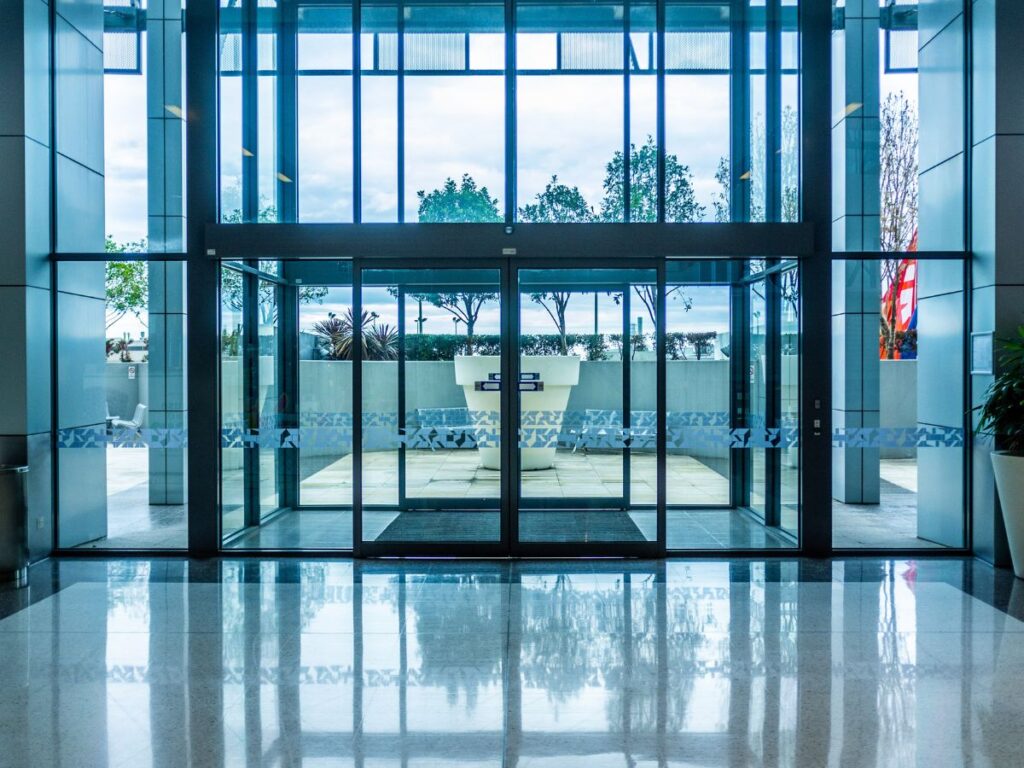
Swinging Automatic Doors
Swinging doors open inward or outward, just like a regular manual door. They are often seen in office buildings, small shops, or side entrances. Vallisco’s swinging automatic doors are easy to install and usually more budget-friendly compared to other types. Just make sure there’s enough clearance for the swing space. They are simple but can be very effective in the right setting.
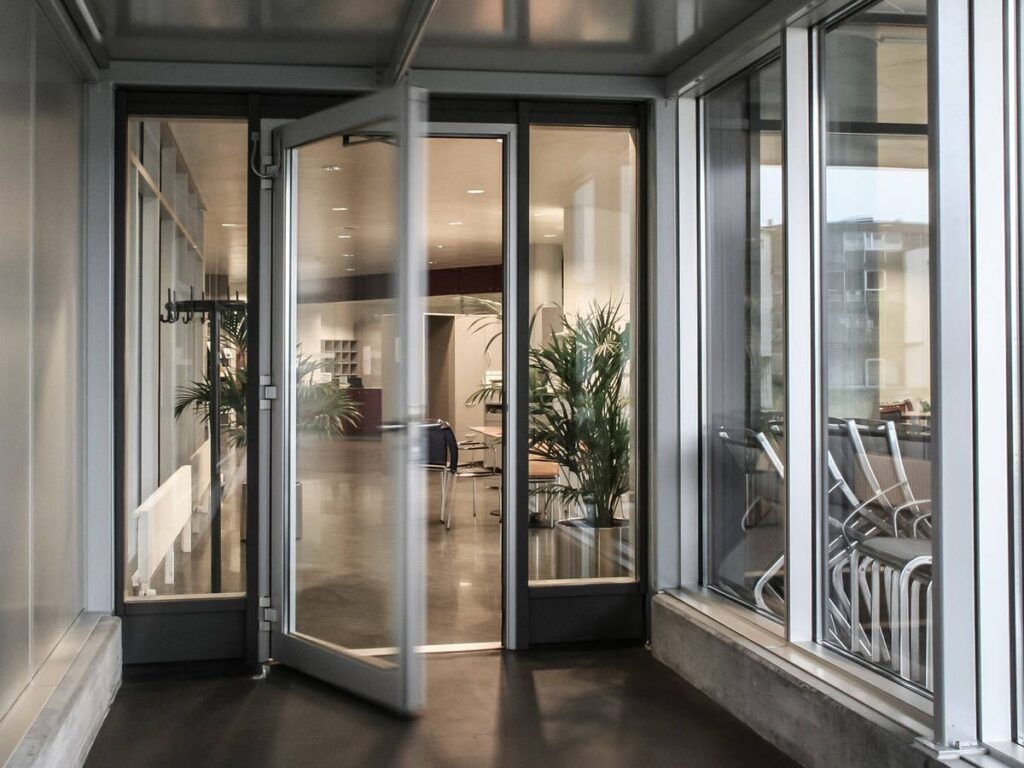
Folding Automatic Doors
Folding doors work by folding the panels together, much like an accordion. They are ideal for tight spaces where a sliding or swinging door would not fit well. These doors are often used in smaller entrances, service areas, or hallways. You will see them in buildings that need access without requiring a wide-open clearance. They are compact, reliable, and get the job done in limited spaces.
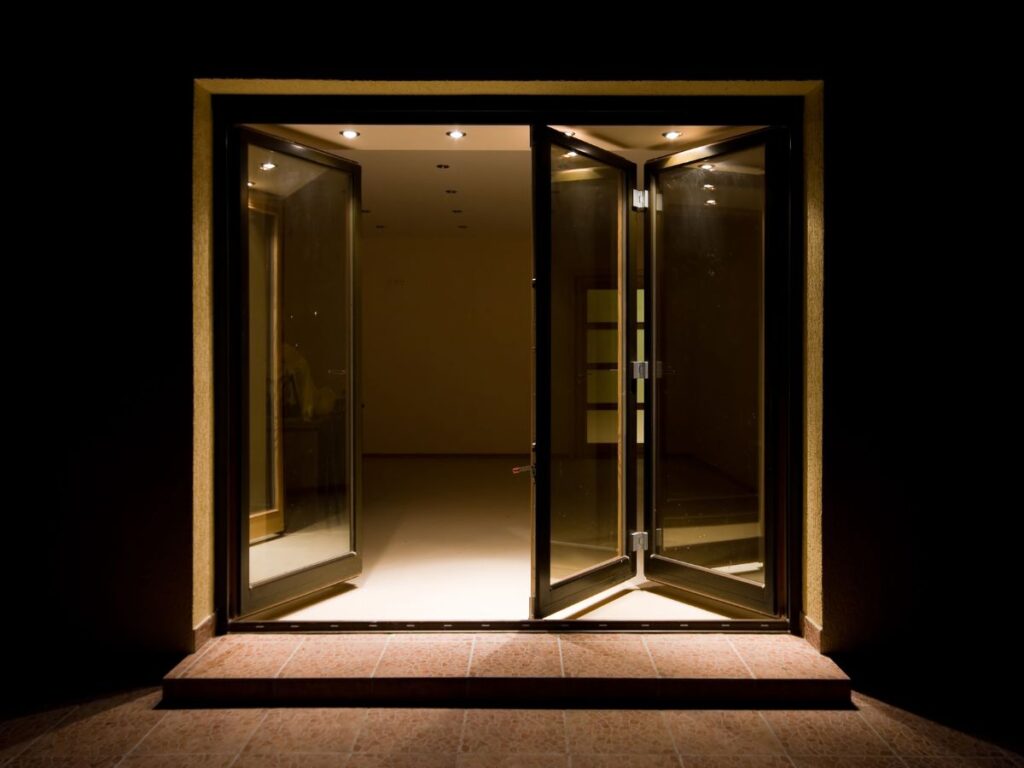
Revolving Automatic Doors
Revolving doors have multiple wings that rotate around a central point. They are mostly used in large commercial buildings, hotels, and airports. These doors help manage indoor climate by reducing drafts, which helps save on heating and cooling. They also help control the flow of people, keeping the entrance organized and steady. If you are dealing with heavy traffic and energy use, this is a smart option.
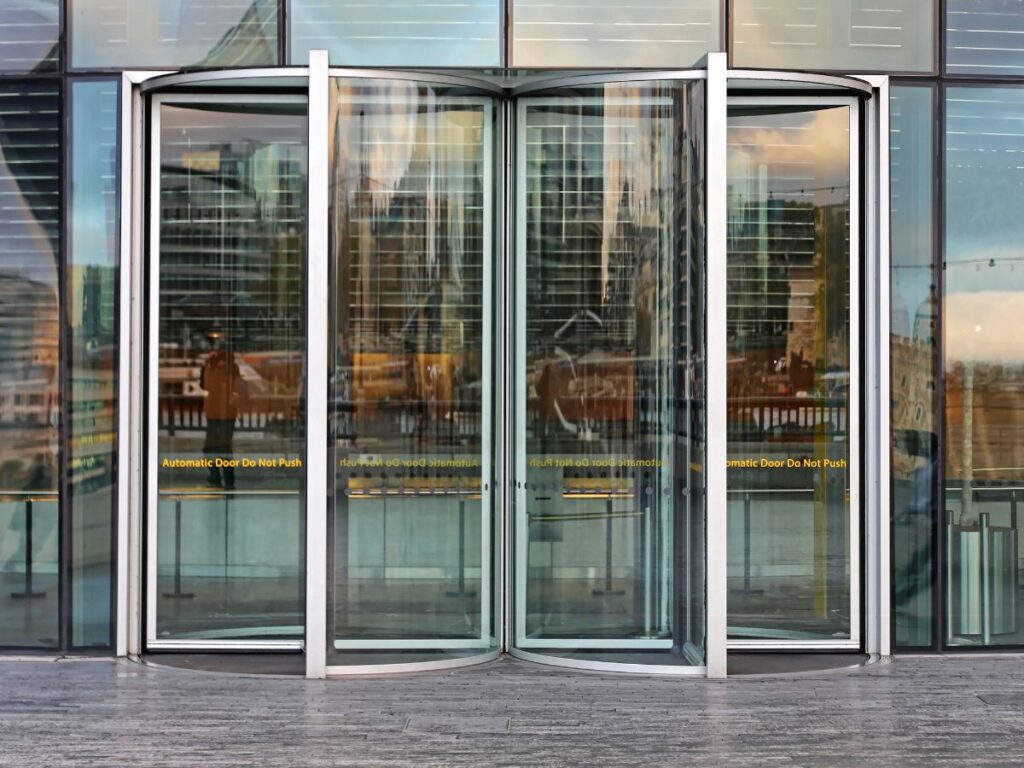
5. Automatic Door Installation Considerations
Installing an automatic door isn’t just about picking a style and placing an order. There are a few key things to think about before bringing in a contractor.
To help you avoid the same issues, here are three important points to keep in mind.
Space and Traffic Flow
Take a close look at the area where the door will go. Do people walk through one at a time, or in groups? Sliding doors are great for steady traffic, while swinging or folding doors are better for tight spaces. Also, check for obstacles like walls, furniture, or uneven floors. Having enough room around the door makes everything work better.
Safety and Accessibility
Your door should be easy and safe for everyone to use. That includes people using wheelchairs, walkers, or carrying items. Safety sensors help prevent accidents, and the door speed should match how people move through your space. If the door opens or closes too quickly, it can cause problems. Make sure you follow local building codes, especially if the door is in a public area.
Power Supply and Maintenance Needs
Automatic doors need power, so check your building’s wiring and outlet setup. Some systems use more electricity depending on the motor and sensors. It’s also smart to ask about upkeep. Will you need regular servicing, or can your team handle basic tasks? Planning ahead for maintenance will save you time and money later.
6. Maintenance and Troubleshooting
Like any equipment, automatic doors need regular care to keep working properly. I’ve seen doors fail simply because no one checked the basics. A little upkeep goes a long way. Here’s a quick table to help you stay ahead of common issues and know what to do when something goes wrong.
| Task/Issue | What It Means | What to Check | How Often | What to Do |
| Clean Sensors | Dust or dirt may block detection | Sensor surface and alignment | Monthly | Wipe gently with a soft cloth |
| Door Slows or Stalls | Motor or track may be worn or blocked | Check track for debris and belt for wear | Every 2–3 months | Clean track, call tech if issue continues |
| Unusual Noises | Loose parts or lack of lubrication | Hinges, rollers, and motor housing | As needed | Tighten screws, apply recommended lubricant |
| Doesn’t Open Properly | Sensor or control unit may be malfunctioning | Sensor coverage zone, power supply | When issue occurs | Reset power, adjust sensor angle, call support |
| Test Safety Features | Safety sensors may lose accuracy over time | Object detection, timing, and door reversal | Every 1–2 months | Place object in path to check response |
7. Safety Regulations and Standards
When it comes to automatic doors, safety isn’t just a nice extra. It’s something every business needs to take seriously. I’ve seen how costly and frustrating it can be when safety rules are ignored. Here are four important areas to focus on.
ADA Compliance (Accessibility Standards)
The Americans with Disabilities Act (ADA) sets rules to make sure doors are accessible to everyone. This means automatic doors must open wide enough and stay open long enough for people using wheelchairs or mobility aids. Controls should be easy to reach and clearly marked.
If your door doesn’t meet these standards, it could lead to complaints or fines. Making your entryway accessible is not just required, it’s also the right thing to do.
ANSI/BHMA Standards
The American National Standards Institute (ANSI) and Builders Hardware Manufacturers Association (BHMA) provide clear safety and performance guidelines. These cover things like opening speed, sensor range, and emergency stop features.
Vallisco follows these standards to ensure their doors are safe for public use. If your system meets ANSI or BHMA standards, that’s a good sign of quality. Always ask your supplier about certification before buying.
Local Building Codes
Each city or state may have its own rules about automatic doors. These can include fire safety requirements, electrical setup, or spacing around the door area. Local building codes often go beyond national standards, so it’s important to double-check. I always suggest talking to your local building department before you install anything. It helps avoid problems and unexpected costs later on.
Routine Safety Inspections
Just because a door was safe when installed doesn’t mean it stays that way forever. Over time, parts wear down and performance can change. That’s why regular safety checks are important. Many businesses schedule inspections every few months to make sure everything is still working properly. A quick inspection can save you from bigger problems down the road.
Conclusion
Remember that jammed door we had to hold open with a chair? After learning how automatic doors really work, we never faced that problem again.
You now understand the sensors, motors, and logic behind these smart systems. You’ve also seen why the right setup matters for your business.
If you want smooth operation and no embarrassing breakdowns, you need quality and insight. Vallisco delivers both. We help businesses like yours make better choices from day one.
Contact us today to get started with doors that work when you need them most.
Check Out These Additional Resources
Need more ideas? Browse through our extended range of products and discover something new:
Still haven’t found what you’re looking for? Don’t hesitate to contact us. We’re available around the clock to assist you.




